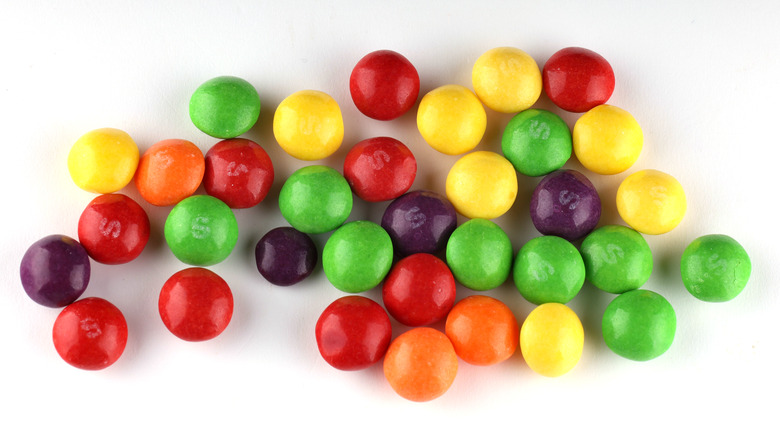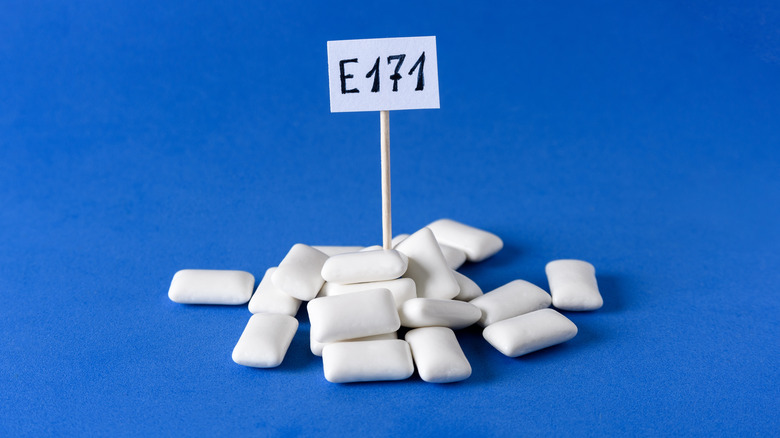Is Titanium Dioxide Really In Our Food?
Are you a fan of titanium dioxide? Well, it may be in the foods you eat or products you use regularly, but you may not be able to tell by reading the label.
Some foods may appear more appealing when they're brighter and more colorful. However, this fact becomes relevant regarding how the foods are getting those colors. According to WebMD, titanium dioxide is a powder considered the whitest and brightest of all known pigments, known as E171 when used as an additive. It helps colors shine brighter and appear more clearly by preventing light from shining through the color.
While this is an interesting quality and use of a pigment, it's also a bit troubling because of where it is used. Recently the European Union found concern with titanium dioxide being added to foods and banned its use in 2022 (per the U.S. Department of Agriculture Foreign Agricultural Service). Back in 2011, a study determined the increased prevalence of the pigment was a reason for it to be used with great care due to its potential to cause cell damage and cancer. So is titanium dioxide currently used in our food here in the U.S.?
Titanium dioxide in food
Titanium dioxide is found in various products that do not seem to have anything in common, such as milk, candy, plastics, paints, and sunscreens (via WebMD). While it may seem fine that titanium dioxide is in milk, as it is commonly consumed and considered safe, it should be concerning that it is also in paint. Titanium dioxide use is regulated by the U.S. Food and Drug Administration, which previously determined that no more than 1% titanium dioxide can be present in foods. Unfortunately, they currently don't require food labels to list titanium dioxide by name. Instead, titanium dioxide can appear on food labels as "artificial colors," "artificial color added," or "color added."
Titanium dioxide was first approved for use in food products in 1966 by the FDA, according to USA Today. Today it is still found in food products, such as coffee creamer, salad dressing, candy, chocolate, chewing gum, and sauces, reports WebMD. Though still approved for use, the growing concern, including that which led to it being banned by the European Union, stems from recent findings.
A 2021 study explains that titanium dioxide can be absorbed and stay in the body for some time before it disappears. Eating more foods containing the pigment could lead to accumulation and possibly more danger for the previously found concerns. Be cognizant of how much of this potentially dangerous pigment you consume that currently may only appear in our foods under vague and unassuming wording.


